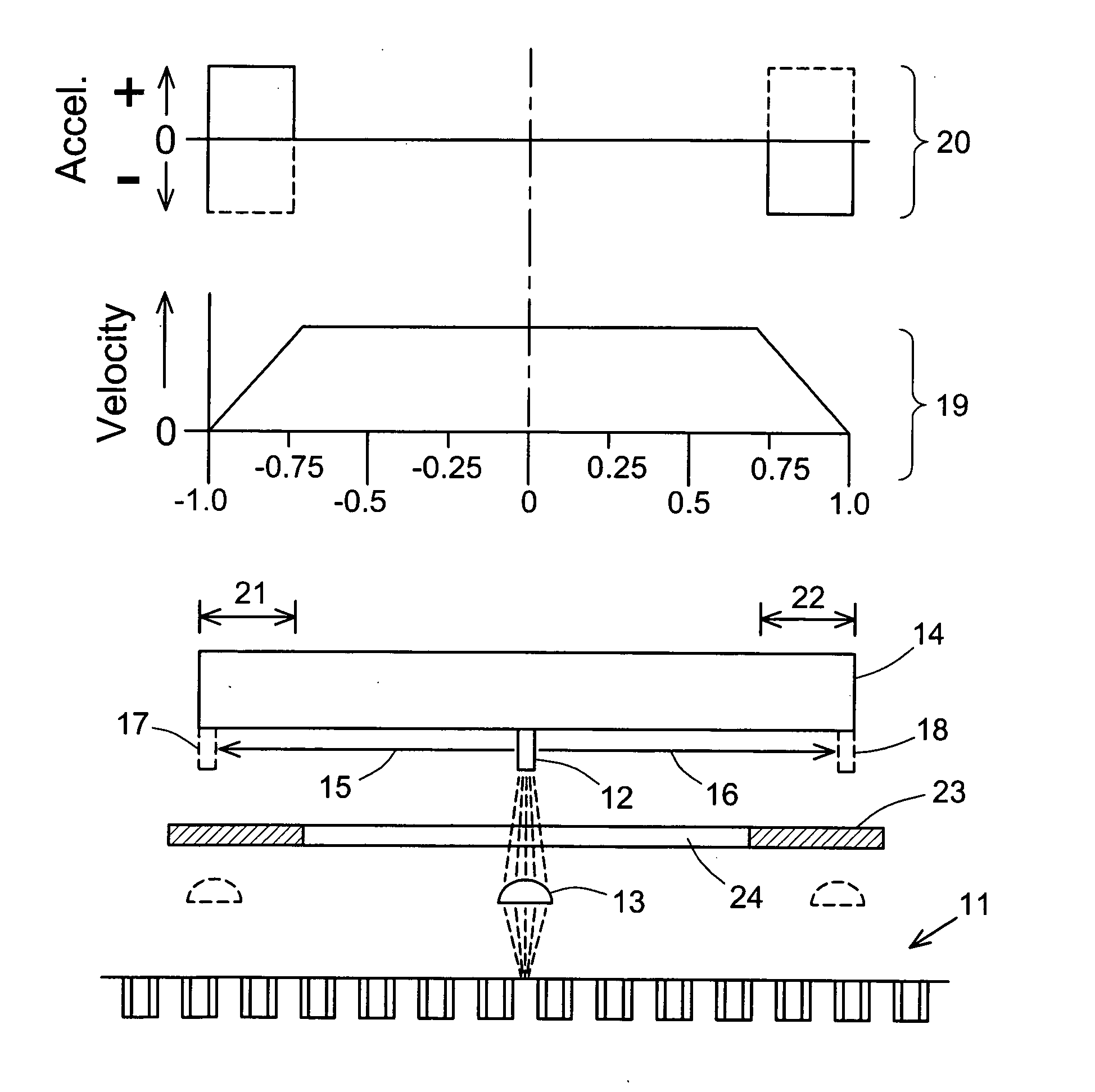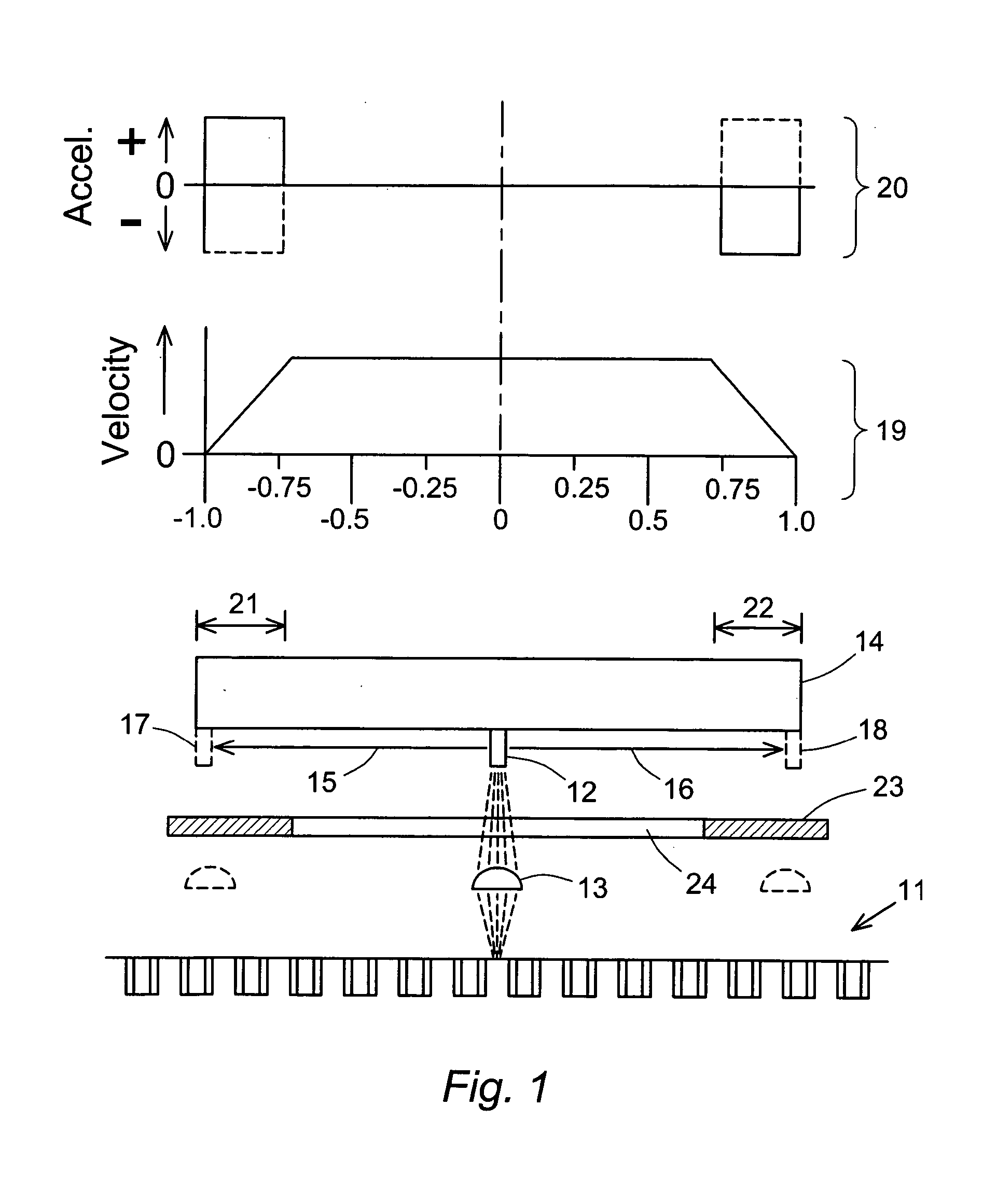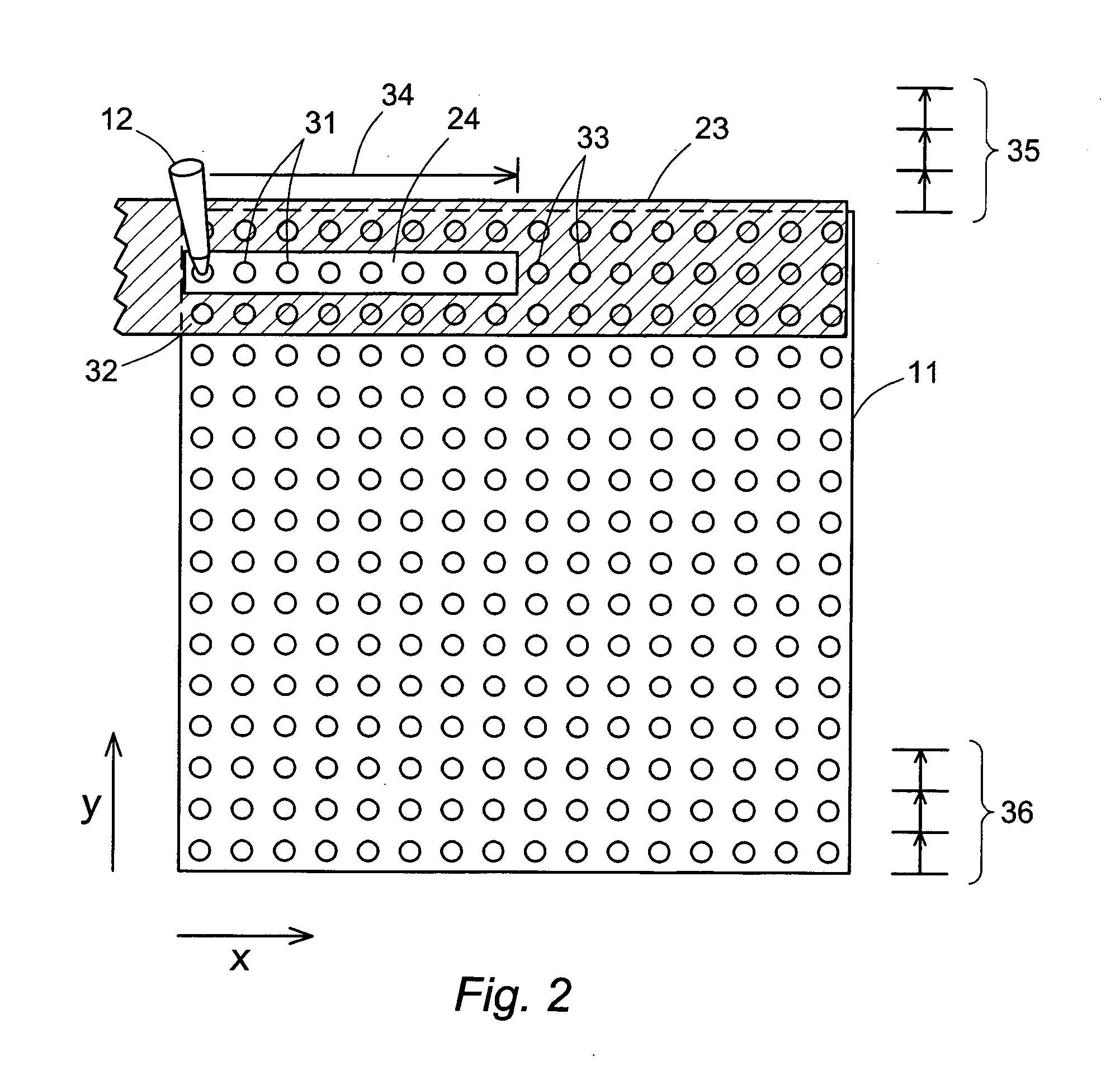Masking to prevent overexposure and light spillage in microarray scanning
a microarray and scanning technology, applied in the field of scanning systems for microarrays, can solve the problems of overexposure or photobleaching of site contents, certain degree of light spillage to adjacent wells, and certain sites to receive greater exposure than others, so as to prevent the spread of light onto adjacent rows, shorten the length, and prevent non-uniform exposure of sites
- Summary
- Abstract
- Description
- Claims
- Application Information
AI Technical Summary
Benefits of technology
Problems solved by technology
Method used
Image
Examples
Embodiment Construction
[0011] The sequence in which the sites of the microarray are illuminated by the light source during the scanning process path is referred to herein as the scanning protocol, and is determined by the length of each stroke of the scan head (to which the light source is affixed) during the reciprocating, i.e., back-and-forth, motion of the scan head, in conjunction with the incremental movements of the microarray to align the scan head with successive rows of sample sites on the microarray and all other movements of the scan head, mask, and microarray needed to complete the scanning of the entire microarray. While individual protocols can vary depending on the configuration and dimensions of the microarray, all protocols will include reciprocating motion of the scan head along the x-axis for each row of the microarray. While a uniform scan head speed would provide the most even distribution of illumination among the sample sites along the path of travel, absolute uniformity is not achi...
PUM
 Login to View More
Login to View More Abstract
Description
Claims
Application Information
 Login to View More
Login to View More - R&D
- Intellectual Property
- Life Sciences
- Materials
- Tech Scout
- Unparalleled Data Quality
- Higher Quality Content
- 60% Fewer Hallucinations
Browse by: Latest US Patents, China's latest patents, Technical Efficacy Thesaurus, Application Domain, Technology Topic, Popular Technical Reports.
© 2025 PatSnap. All rights reserved.Legal|Privacy policy|Modern Slavery Act Transparency Statement|Sitemap|About US| Contact US: help@patsnap.com



